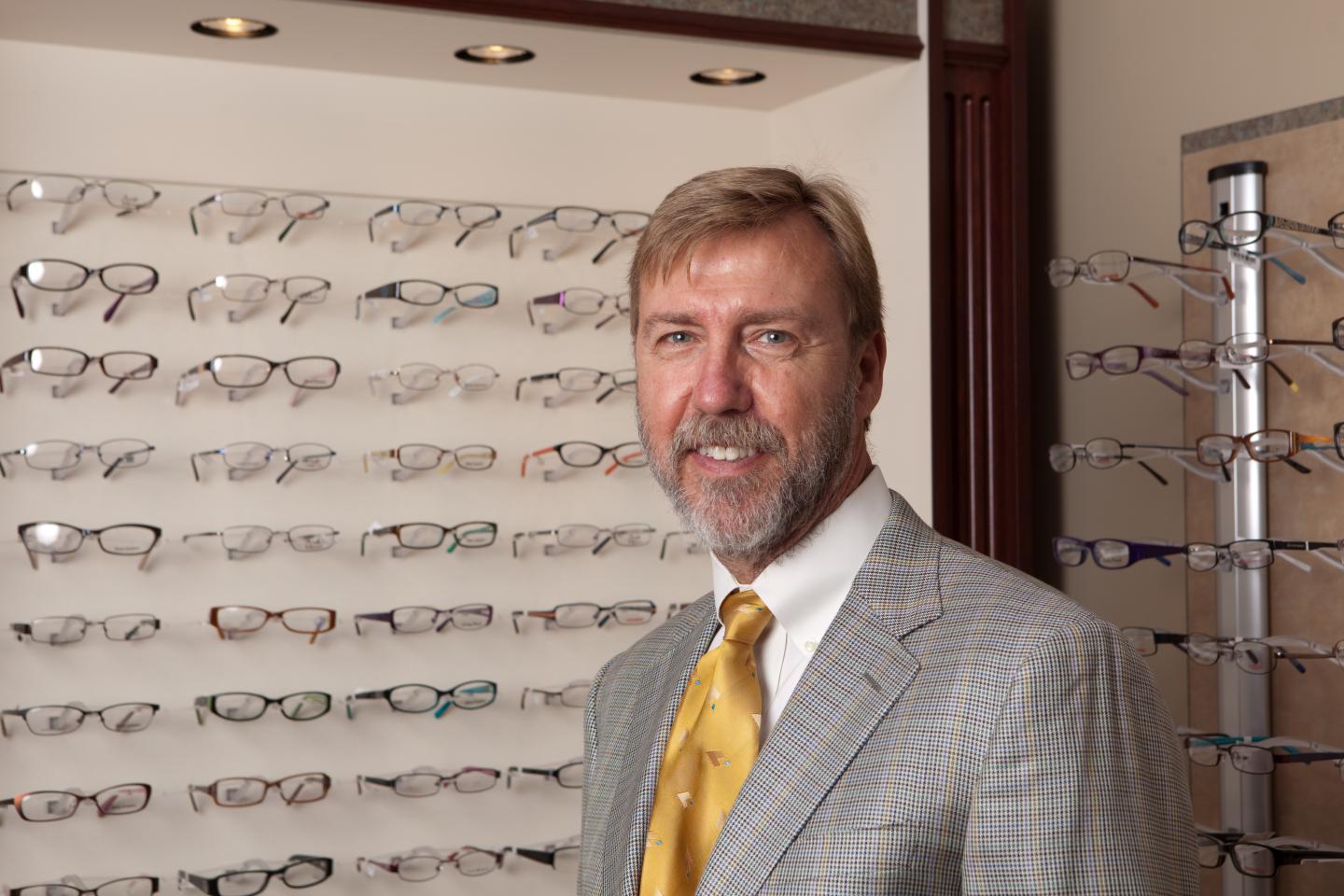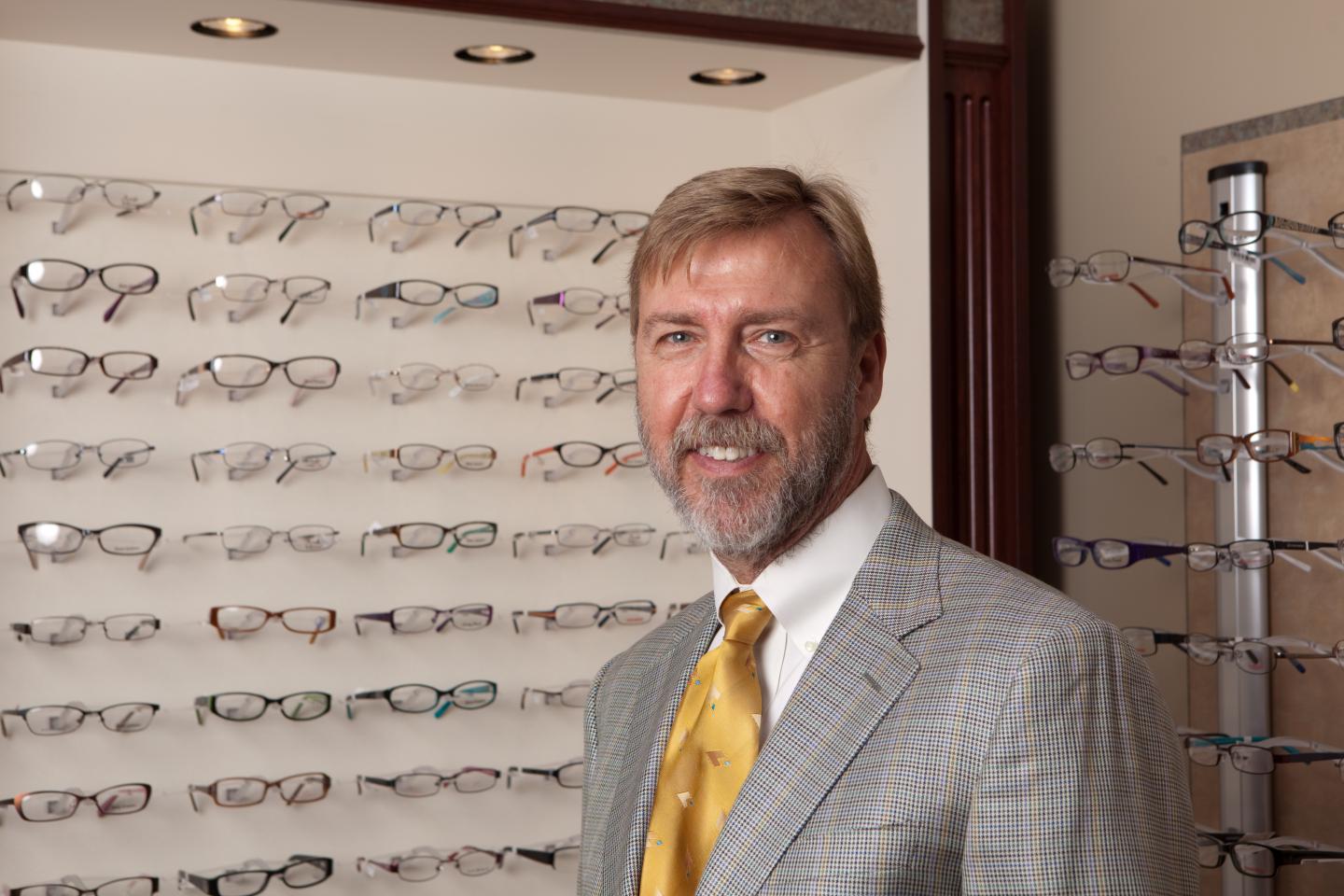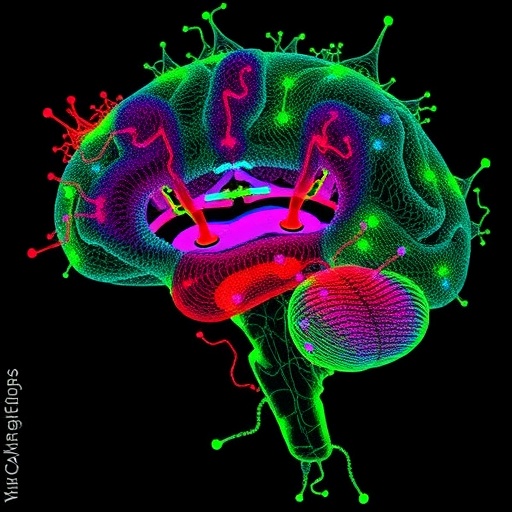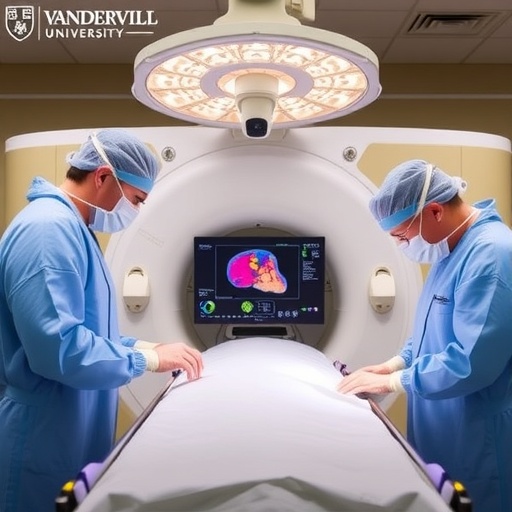
Credit: Thomas Campbell
HOUSTON, March 10, 2017 – Nearsightedness has become a global epidemic. With more than two billion people currently affected, it's double what it was a half century ago. By the end of the decade, estimates suggest this will grow to one-third of the world's population and climb to nearly five billion, which is half the world's population, by 2050.
Researchers at the University of Houston College of Optometry are working hard to prevent that from happening. Dr. Earl L. Smith, Greeman-Petty Professor in Vision Development and dean of the College of Optometry, is at the forefront of myopia research, with his pioneering work in developing treatments to slow the progression of nearsightedness in children. Smith was recently awarded a $1.9 million grant from the NIH's National Eye Institute to provide a better understanding of the causes of common forms of myopia, more commonly known as nearsightedness, and to develop effective treatment strategies for it.
People who are nearsighted can see close objects clearly, while objects farther away appear blurred. The condition occurs when a person's eyeball is too long. This results in the light that enters the eye not being focused correctly. Myopia usually develops in school-aged children when eyes are growing and, if left undetected, progresses and significantly increases the risk of cataracts, glaucoma and retinal degeneration and detachment as people age.
"While genetics play a role and determine susceptibility, there's something in our behavior and environment that's contributing to the increased numbers of people becoming nearsighted," Smith said. "Intense educational demands and spending more time inside than outside are things we know contribute to becoming myopic. In situations where there are high educational demands, people are very likely to become nearsighted. I'll use our optometry students as an example. About half of them become more myopic during their four years of school here."
By effectively changing the focus of the eye, Smith's research shows that it is possible to change the way the eye grows. While they can't cure or reverse myopia, they are able to slow it down and, in some cases, stop the progression. That's why it's critical to start early with treatments as soon as a child becomes nearsighted.
Specifically, the research made possible by this grant aims to determine how visual experience affects refractive development, to characterize the mechanisms that regulate eye growth and to explore new pharmaceutical approaches to eliminate myopia. Distributed across five years, the grant will allow Smith and his colleagues to expand upon their previous research that showed promise in answering long-debated questions about environmental factors that could have an impact on eye growth and lead to nearsightedness.
The first half of their studies will look at how low light levels and the color of lighting indoors affect eye growth. If it turns out low light levels contribute to a person becoming nearsighted and that certain environments may make it more likely as well, then these findings could have implications for lighting standards in schools and workplaces, in particular, since certain standards must be met. The other half of this project will be to test the safety and efficacy of a new pharmaceutical agent that has shown promise in previous studies to slow the development of myopia. The results will potentially provide the scientific foundation for new treatment and management strategies for the most common forms of nearsightedness.
"We're in the midst of an epidemic worldwide in myopia," Smith said. "In Asia, 80 to 95 percent of high school graduates in urban areas are nearsighted, and there's strong evidence that the prevalence of it is increasing here in the U.S. and in Europe, as well."
While some argue that blurry vision can be corrected with glasses, Smith says the concern is that it doesn't correct the underlying problems and accompanying comorbidities that can damage the eye and cause vision loss. As a result, myopia is currently among the top three leading causes of permanent blindness in the world and among the top five most common causes of it in the U.S.
"Our research is aimed at slowing the rate at which children become nearsighted. Usually, when kids become myopic, they'll progress to become increasingly so, and the higher degree of myopia you have, the more at risk you are for these blinding conditions," Smith said. "Estimates suggest that by 2050 almost 60 percent of the U.S. population will be nearsighted, so it's a big problem. Anything we can do to slow that down potentially has a big payoff from a public health perspective."
A clinic dedicated to using strategies that slow the progression of nearsightedness in children will be opening within the UH College of Optometry's University Eye Institute by the end of this summer. Open to the public, they will see children who are at risk for or have shown signs of becoming myopic and are likely to become more so. While the college already has faculty serving as attending physicians in the eye institute doing this now, creating this clinic will expand their capabilities and provide patients with a dedicated service that specializes in it.
###
About the University of Houston
The University of Houston is a Carnegie-designated Tier One public research university recognized by The Princeton Review as one of the nation's best colleges for undergraduate education. UH serves the globally competitive Houston and Gulf Coast Region by providing world-class faculty, experiential learning and strategic industry partnerships. Located in the nation's fourth-largest city, UH serves more than 42,700 students in the most ethnically and culturally diverse region in the country. For more information about UH, visit the university's newsroom at http://www.uh.edu/news-events/.
For additional news alerts about UH, follow us on Facebook at http://www.facebook.com/UHNewsEvents and Twitter at http://twitter.com/UH_News.
Media Contact
Lisa Merkl
[email protected]
713-743-8192
@UH_News
http://www.uh.edu/news-events
############
Story Source: Materials provided by Scienmag






